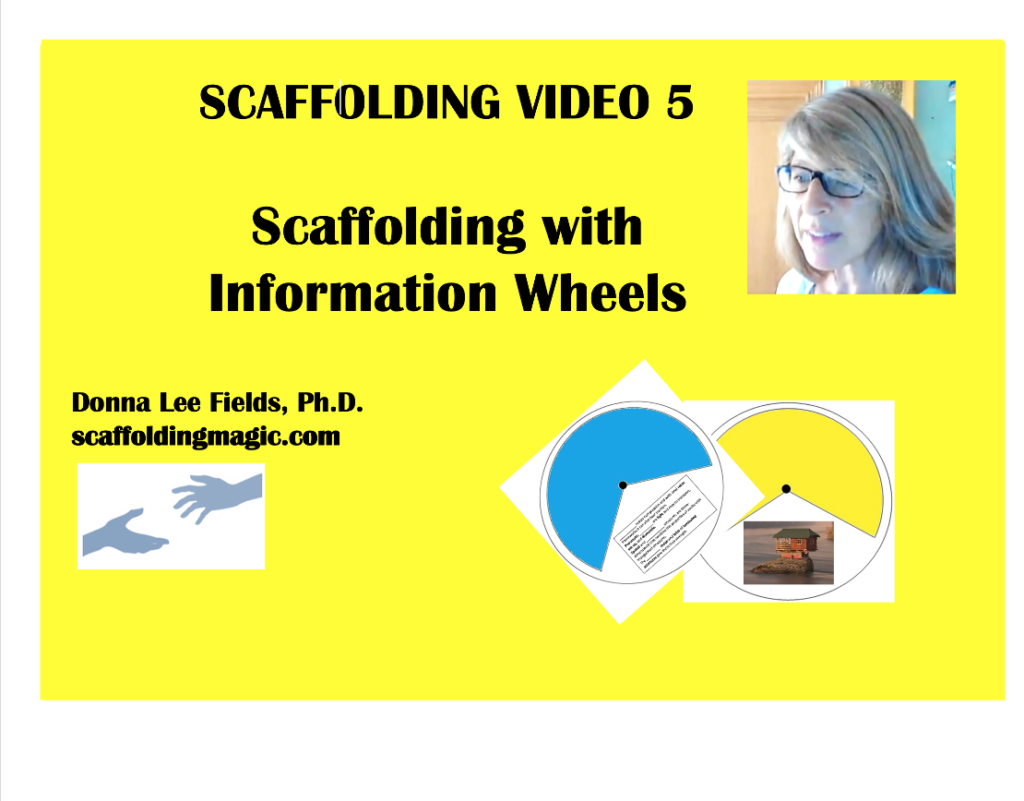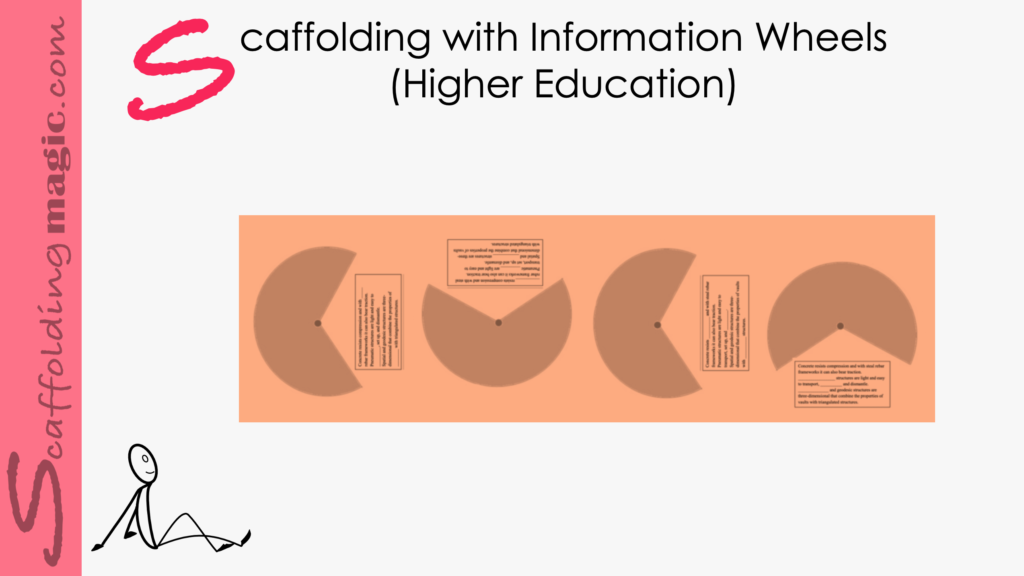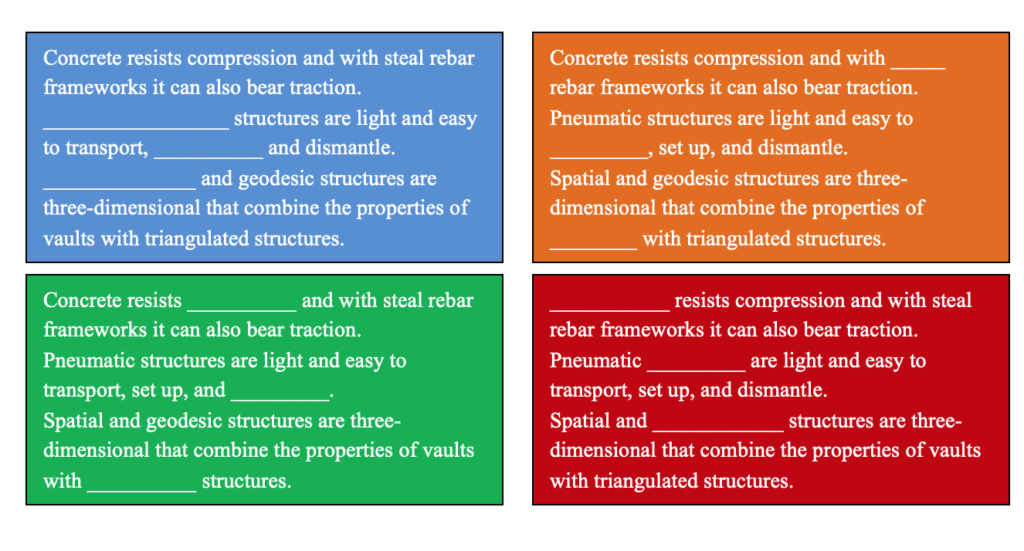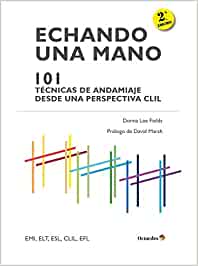You caught a beauty!!!
Download PDF of scaffold here.
theory behind scaffold…
Using information wheels in lessons is a wonderful way of honouring our students who need to learn through kinesthetic interaction. With information wheels, your students will use ……………………………………………hey will be interacting with information with their hands, they’ll benefit from the essential transition from social-to-exploratory-to dialogic-to presentational-and…finally…to meta learning.*
Working with information wheels is a way of giving students a venue in which they ca take chances by verbalising their suppositions about new information. They’ll discover ………………………………………………… – in chunks – we compensate for the cognitive load, and so the anxiety level that often arises in the face of new information, is reduced significantly. All of this with the finality of helping our students to build a strong foundation of academic language and so more confidence in verbal communication.
Above all, with this activity, students process information through positive transfer. This happens when the learner uses ……………………………………………………….This creates the necessity for students to remember, negotiate, infer, and use dialogue, to be able to fill in the missing words that to the best of their ability.
Th……………………………………………………….which, according to John Hattie’s studies, is one of the highest influences on learning.
We u……………………………………………..g. You’ll see how easily you can adapt the activity to whatever unit you are about to begin.
step by step…
- Choose 5-10 extracts of a text from a unit (……………………………………..you are about to begin.
- P…………………………………………………….Do the same for each of the extracts you’ve identified. (In other words, if you have chosen five extracts, you’ll have 20 text boxes. ………………………………
- Use the template to make Information Wheels – ideally the same number of pairs of your students in the class. (If you have 24 students, you’d make 12 Information Wheels, etc.)
- Paste the sets of text boxes into t…………………………………………..(See example below.)

- Give one wheel to each pair of students and they work together in the following manner:
- They read the extract in one aperture aloud and guess what the missing words could be.
- They turn the wheel so that the extract in the next aperture is visible.
- They read this extract (now with different words missing) and recall or gue………………………………….. the text blocks with ease.
Note: If they don’t remember the missing words, we want to encourage them to discuss, negotiate, infer, etc., but we want to discourage them from turning the wheel backwards.
- On your signal, students exchange ………………………………..
- Formative Assessment: Show and image from the Body of t……………………………… Groups take turns describing the image, using the academic language and information from the wheel activity.
- Reflection: Students write the answers to the following………………………………….. (Remember, some questions reflect content and others reflect methodology, thus augmenting even further self-efficacy.)

- Do you recycle?
- Which materials are the easiest to recycle?
- Who do you know doesn’t recycle?
- When did recycling begin?
- Where can we leave materials to recycle?
- What does it mean to recycle?
- How does recycling benefit the planet?
- Why do we recycle materials?
- What if the government gave awards for the best recyclers in each neighbourhood. How would that change the number of people who were more active in recycling?
USING IMAGES:
Information Wheels are ideal to present visual information, for instance – …………………………….. It would be beneficial to include academic language and/or a list of the images, symbols, objects, etc. that you most want them to notice and discuss.

video explanation of scaffold…

find more scaffolds here…
The CLIL approach and the Fourth Industrial Revolution


Scaffoldingmagic.com is your entryway into DYNAMIC bilingual learning methodologies, such as Phenomenon-Based Learning, CLIL, EMI, and ESL. You’ll find ways to implement critical thinking tools (DOK) to promote higher level thinking, the growth mindset, instill an ethic of excellence, deep reflection on learning, and all through multi-cultural, interdisciplinary activities. We have the keys to turning competences into action and to creating collective efficacy in your school so you move ahead as a unified, enthusiastic team.






